China is a wild, mysterious, vast nation, which feels as close to another planet as an American can get. My interest in China is evolving into a mild obsession. I love the food, the people, am boggled by the history, and relish in its uniqueness to the rest of the world. You can stand on a street corner in Chengdu or Beijing, and feel like you have gone back in time, and into the future simultaneously. I think everyone should see and attempt to understand China, as it has many lessons to teach us (some good, some bad), and will continue to have more and more influence on the world in the future.
It was the panda that originally brought me to China for the first time, several years ago. This elusive “living fossil,” which evolved 3 million years ago, was brought back from the brink of extinction through exhaustive work by the Chinese Government and the World Wildlife Fund, and still faces a difficult road in the future. In a few weeks I will be guiding the Wild and Ancient China Photography Expedition in which the highlight will be learning about, seeing, and photographing many pandas very close. In my downtime, I have been researching options for future trips. Very recently, many remote areas of Sichuan Province have completed restoration of infrastructure and roads that were destroyed by the 2008 earthquake. I got the go-ahead from Nathab to chase down some rumors of locations which may provide exciting opportunities for future trips or extensions. I teamed up with my close friend Phillip He, an experienced guide and naturalist from the Kangba Tibetan Region who now lives in Chengdu, and we rolled north into the wild Minshan Mountain Range. This is the stuff of my dreams.
We decided to take the road less traveled and look for places that few, if any, people visit. We were looking for those spots on the map, whose names are unknown to Google, and even local travel consultants. It was a gamble, but how else can the best, most unique trips in the world be designed? Only through exploration, trial and error.
I remember sleeping in the back of the car, stretched out, half consciously mulling over itinerary options, and fantasies of maybe spotting a moon bear or a panda in the wild. I opened my eyes and saw giant, green vertical mountains jutting up on either side of the narrow, winding road- we were finally in the Minshans! We climbed and climbed for an hour, reached a pass that overlooked ridges and valleys that reminded me so much of the Southern Appalachians where I lived as child. We then dropped into a hidden, unvisited world, and things just kept getting better and better.
We entered a beautiful, peaceful village surrounded on all sides by lush mountains, and on 2 sides by some of the wildest country in China, all strictly protected as nature reserves since the 1960s, and home to healthy populations of some of the rarest wildlife on the planet. I could immediately tell that the residents of this idyllic village had never before seen a foreigner. I didn’t feel like an invader, as the smiles were bursting, instead I felt the potential to be an ambassador for the respectful wildlife lovers of the planet who wanted to appreciate and bring value to the wild treasures that had been so well cared for in this region. I told Phillip that If we were to return with a group, we should visit the local school, bring animal and bird books, and donate them to the kids to plant the seeds for future careers in wildlife conservation. “I always do that in villages that border parks like this. Its a great idea” Phillip replied.
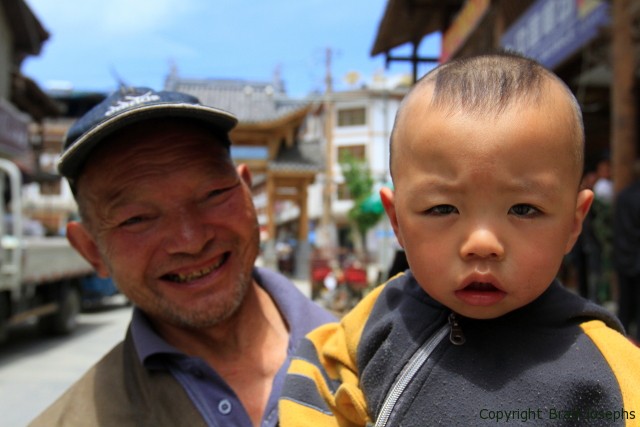
The future of wildlife is in the hands of the children. I was the first foreigner that this little guy had ever seen. Next year I might see him in school, and give him some animal books. In 15 years he might a naturalist guide, conservation officer, or biologist in charge of wild panda conservation.
We ate dinner with Ms Li, the director of wildlife research for the reserve, and talked about wildlife for hours. Phillip translated her romantic stories of wild panda, moon bear, leopard cat, badger and golden monkey encounters, and described the biology of each drainage. I told her about polar bears and grizzly bears and the aurora borealis. I told her how excited I would be to bring a group of wildlife lovers to the reserve in the future, and explained Natural Habitat Adventures, and its missions involving responsible ecotourism, education and conservation. She said (Phillip’s translation) “We would welcome you here, and be honored. Our reserve is not targeted by, or designed for normal tourists, and we never want it to be. We want to save it for people who want to appreciate and respect the wildlife. I will personally make sure you can explore the reserve with our best staff, see lots of animals, and help you make a program for the future.” Quotes like that get me really charged up.
The next morning the songs of oriental magpie robins, various warblers, and laughing thrushes coaxed me from my sleep in the little guesthouse surrounded by forest and small farms. When I emerged from the room I noticed the owner and wife where waiting for me outside in the courtyard with green tea and huge smiles. Over breakfast he began telling Phillip a story, who translated for me. “In 1985 this man was given an award by the Chinese Government for finding a sick panda, and rescuing it.” He went inside and brought a framed picture of him with a panda sleeping in a bamboo thicket, and a large, framed award certificate. “This man helped with the panda research in the 1980s” I was meeting a legend from a legendary time. He had been involved in the studies with WWF and biologist George Schaller (one of my heroes), and had met him. He accompanied Phillip and I on a short bird walk through the farm fields after breakfast. I promised him if we were to bring a group of people in the future, we would stop for a visit so he could tell them his precious stories.
We drove into the reserve, and hit every trail possible, and gathered as much information as we could. We were virtually the only ones there, and I was among the first 10 foreigners to visit the park. There is too much to describe. But here are some images from this exceptional, secret wilderness area that we discovered through trial, error and a little gambling.
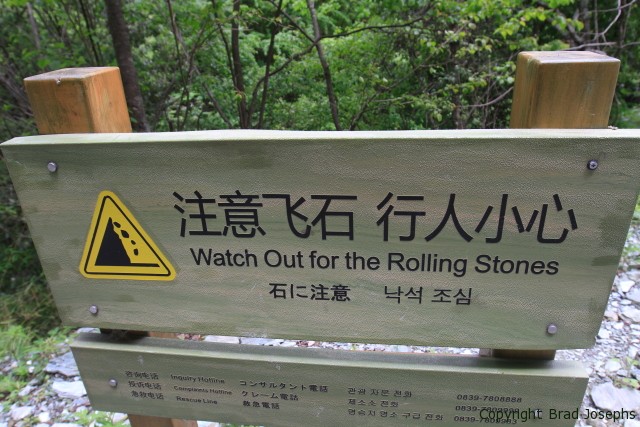
We found Mick jagger’s scat from mid March, but he and the other band members normally perform and reside at higher elevations from May-Oct. I have a thing for funny translations. Ms. Li and Phillip didnt understand why I laughed at this one.
The forests were teeming with the wildlife that I thought I would never see in the wild. Asian wildlife has been hunted for thousands of years, and its habitat has been converted to agricultural lands, but fortuantely in the high, rugged mountains, animal populations remain stable. We saw two subspecies of the takin (Sichuan and Golden), which are members of the Bovid subfamily Caprinae (the goat-antelopes). These muscular beasts can weigh up to 800 lbs, and live in the most rugged mountain country in Asia, up to 14,000 feet in elevation.
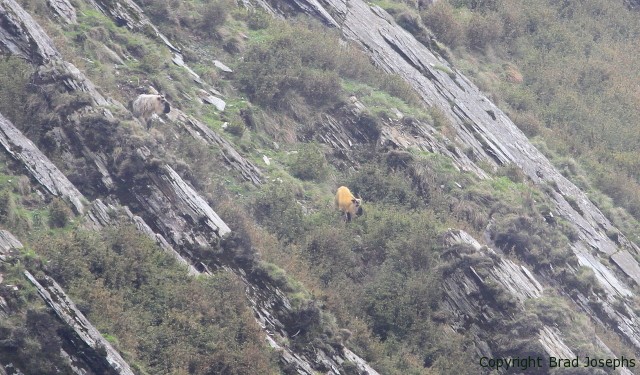
A sichuan takin (above) and golden takin (below) graze on a steep cliffside in the Minshan mountains of Sichuan, near the Gansu border.
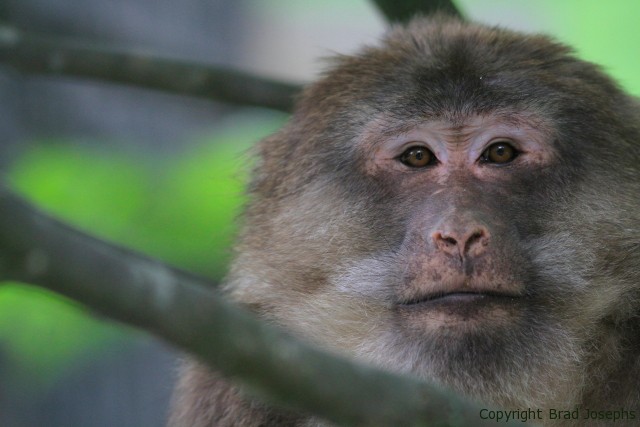
A male tibetan macaque. This rare, awesome species of primate, thrives in the reserve and has no fear of people.

This location was very very dangerous and difficult to reach, so cant bring people here, but it shows the country. This is a 9500 foot hog-back ridge that marks the border of Gansu and Sichuan Provinces, This is the high country of leopard, takin, panda and golden eagle. If John Denver had ever come to China and hiked up to this place, ,you can bet he would have written a song.
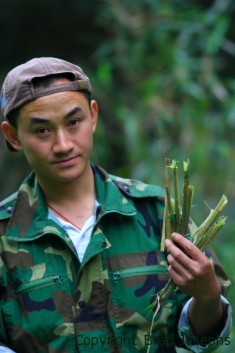
We found sign of wild moon bear, or asiatic black bear in a bamboo thicket from the previous day. The bear was feeding on bamboo shoots.
I realized how intact this ecosystem was when we found 1 day old sign of a wild moon bear, also called asiatic black bear. Reserve staff had seen the bear the previous day, and we returned to examine the traces of its foraging in a stand of young bamboo. Moon bears have been hunted throughout their range to feed the demand for bear bile, which can sell for $33/ per gram! They are raised in cruel farms where bile is collected from living bears (read more about this), In the wild they share their range with pandas, and also feed on bamboo shoots, but their diet is far more varied than the panda. In this reserve they feed heavily on the fall crops of chestnuts and walnuts, a variety of fruits, and scavenge on carrion. One of the staff members told me they occasionally prey on the calves of deer and takin.
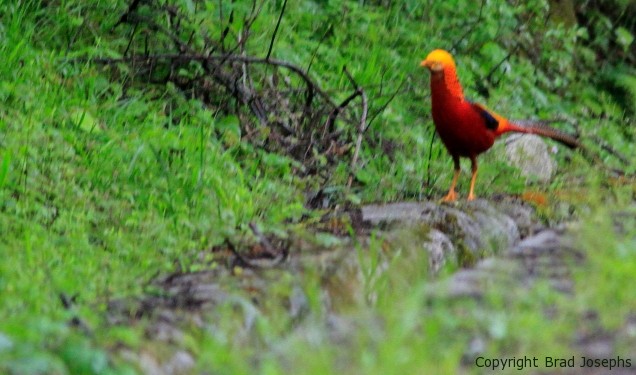
A wild golden pheasant, among the Earth’s most beautiful gamebirds, crosses the trail in front of us. It was very dark, so the picture quality is not so good, but this was one of my life’s most exciting bird sightings.
We also found fresh sign of the wild golden snub-nosed monkey, These strikingly beautiful animals are among the world’s most endangered primates. They share habitat with pandas, living in the canopy of the forests, feeding on fruits, nuts, and lichens. They live at the coldest average temperature of any primate, other than humans.
My main objective on this project was to find places where our travelers could get into the habitat of wild giant pandas and other endemic wildlife safely and easily, and we certainly found some. Due to the density of the thickets that they reside, the chances will always be slim that a wild panda will be spotted. We also will NEVER chase, track down or in any way disturb the pandas- for these types of activities do far more damage than good.- this is bad ecotourism. We did find fresh sign, which was an indescribable thrill for me. For a true wildlife lover like myself, stepping into the habitat of wild pandas is a religous experience. We looked for the pandas, mostly by checking the branches of high trees above the bamboo where pandas often sleep, and scanning the grassy meadows beween bamboo stands. We didnt see a panda, but I would bet a panda saw us. Next time we may be lucky enough to spot a panda, but if we dont, its OK, because the thrill comes from exploring the habitat, looking into a thicket and knowing that they were there yesterday and may be there again tomorrow. Afterall, we have so many wonderful up close viewing opportunites in panda bases and breeding centers we visit Hopefully, with careful planning, we can return to this unknown region of China on future Natural Habitat Trips. In doing so, we will help to support the conservation of these rare species, and rich habitats. The staff of these reserves have such passion and a wealth of local knowledge, they deserve a chance to share it with people from other parts of the world. If done respectfully, and carefully, ecotourism can be one of the keys to wildlife conservation, and its also a blast!
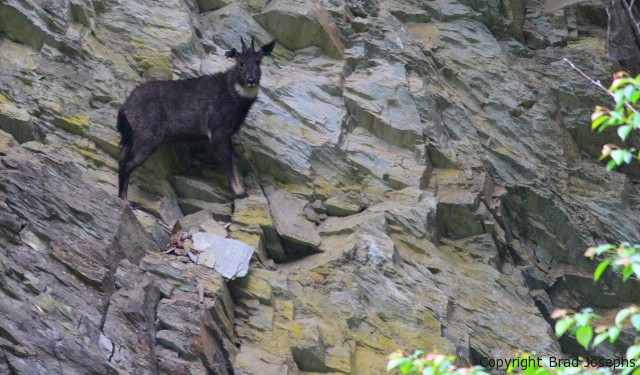
The chinese black serow, or mainland serow. I checked, and it seems this may be the first image of a wild chinese soral to hit the internet!
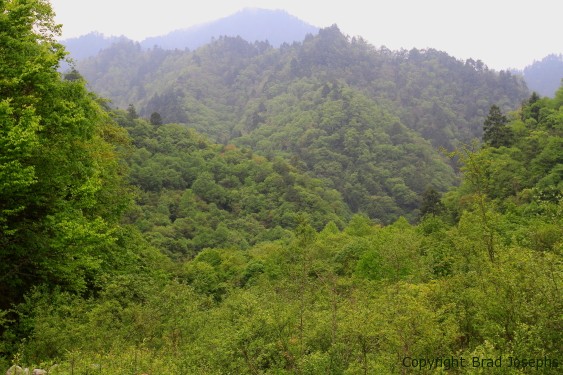
The home to wild red pandas, giant pandas, leopard cats, blue sheep, muntjac, wild boar, moon bears, asian badgers, chinese grouse, golden monkeys and tibetan macaques- just to name a few….
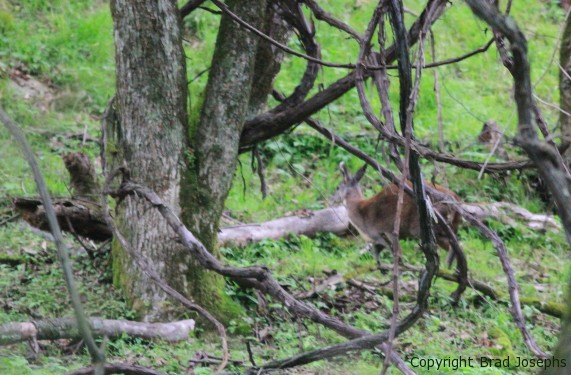
One evening we spotted a musk deer. This image isnt great as light conditions were poor, but this is an extrmely rare species which has suffered heavy hunting in its range as its musk gland has been used to make perfume for centuries.
CLICK HERE to see the new trip to China next April. Check out some of my other posts about Pandas, moon bears, and NHA expeditions in China- “the wild east.”
Pictures of Pandas In Chengdu, Sichuan, China.

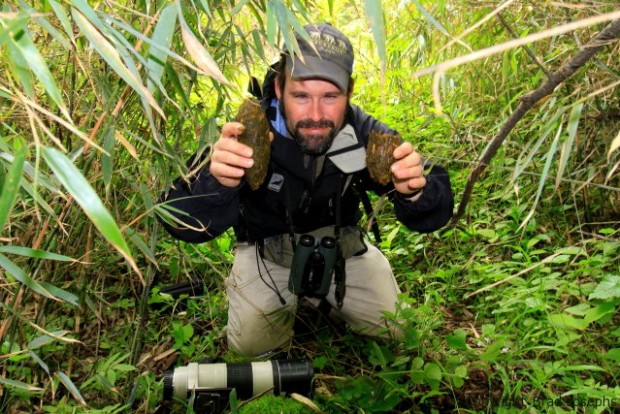
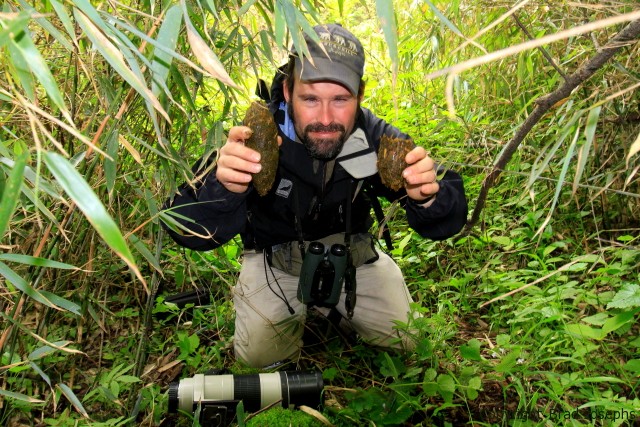
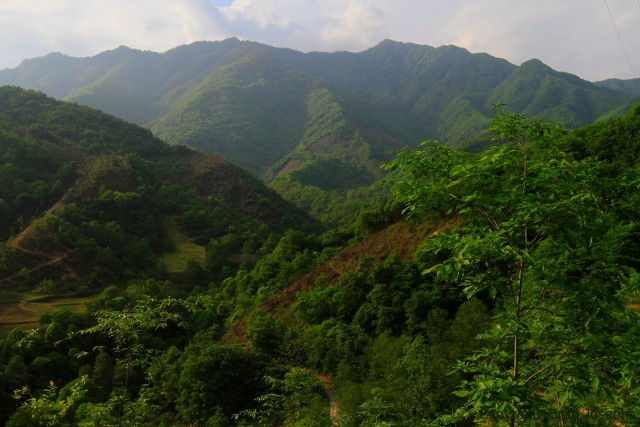
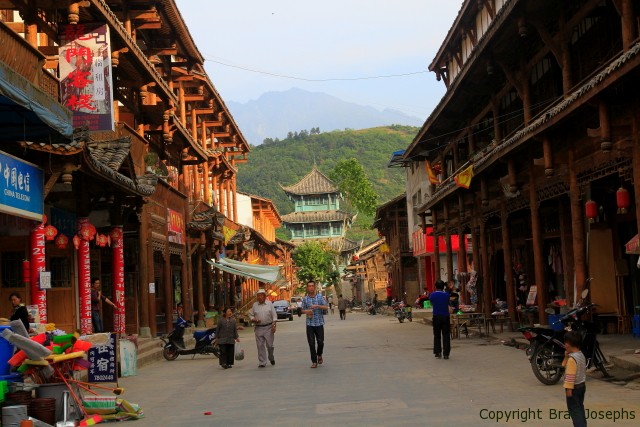
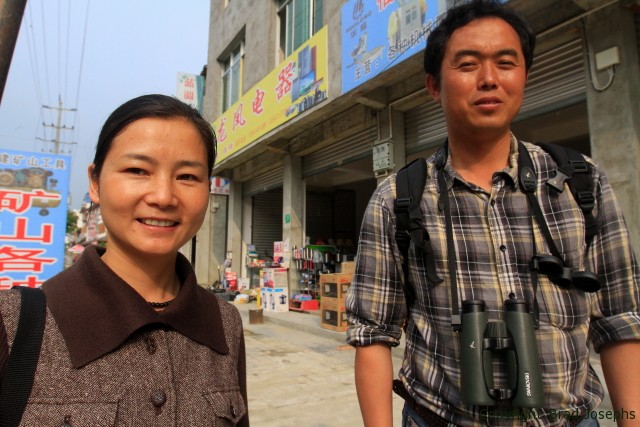
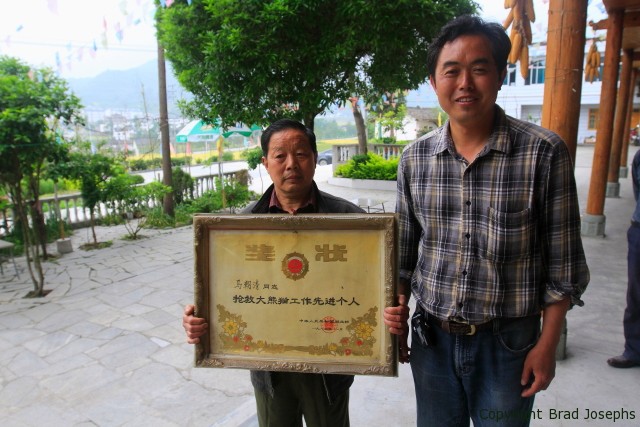
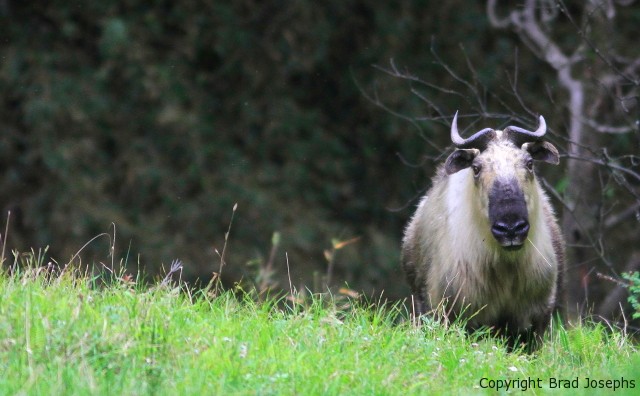
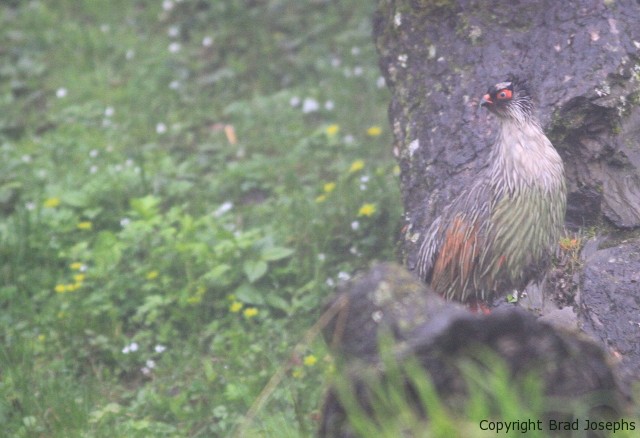
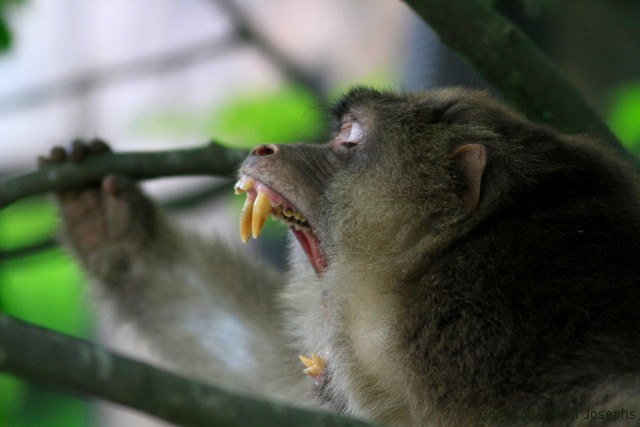
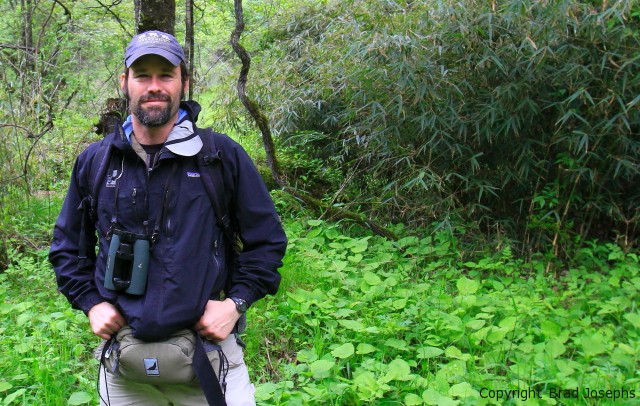
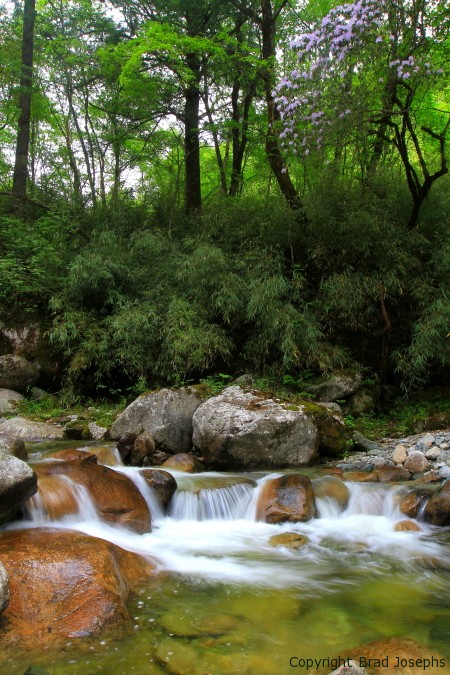

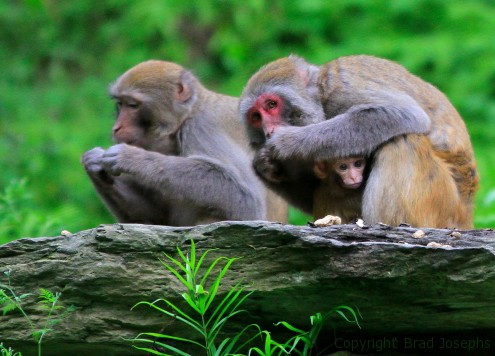
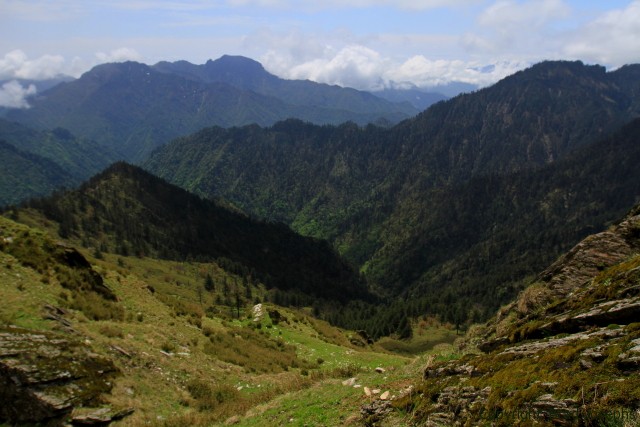
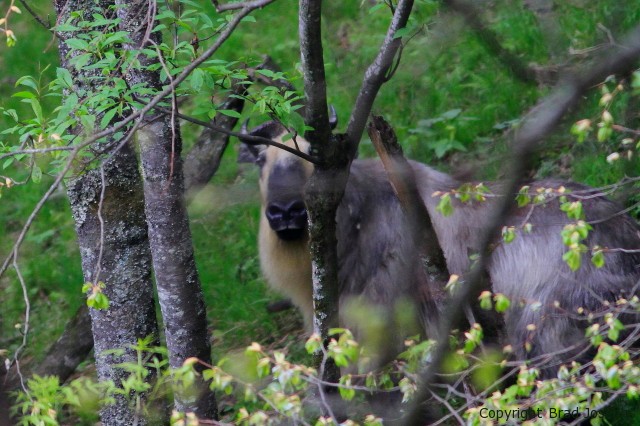
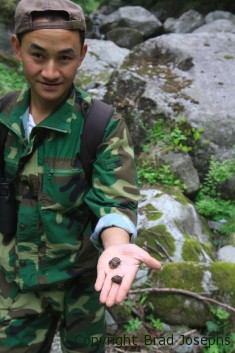
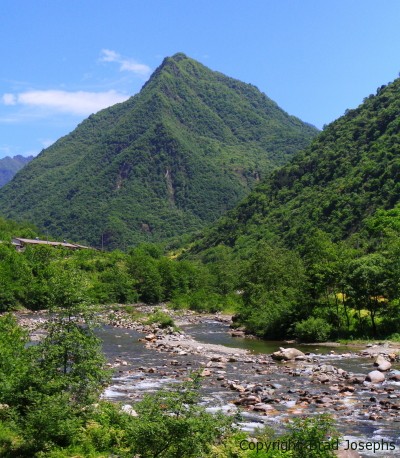
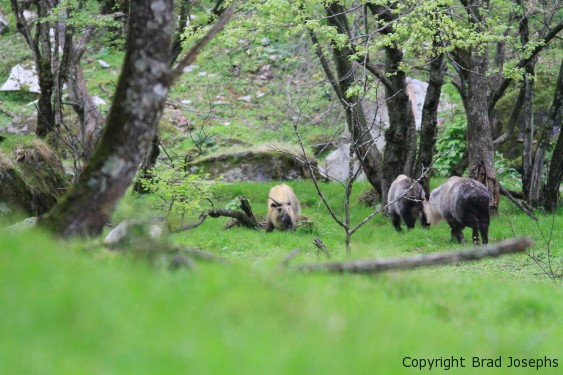
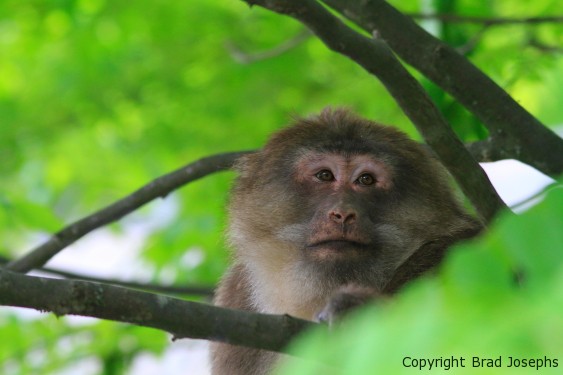
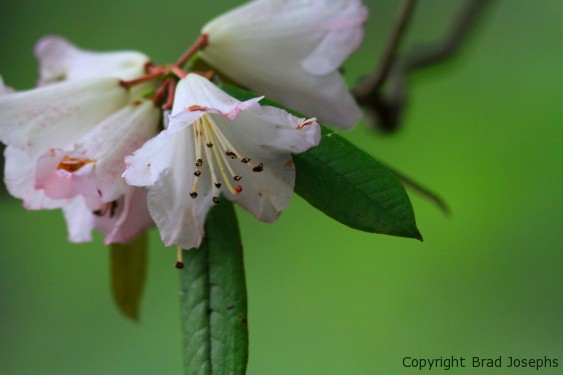


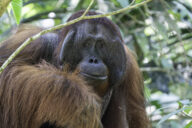
8 Comments
Fantastic photos! I visited the Panda Preserve and some of the region of Sichuan’s remote highlands in the 1980s. It is a fascinating, beautiful, remote area. Thanks for sharing.
Awesome job Brad.You are much admired and greatly respected for the outstanding work you do fighting for our natural world.
Brad, looks like you’re having a fabulous time and taking many unique and interesting photos. I’m jealous…perhaps I should not have left the China adventure tour on April 29th that you led, but just continued on with you as you explore parts of China hardly ever seen by foreigners.
Hi Brad, great photos and storyline, after travelling with you on the Epic China trip just recently we realise how much more we know and appreciate about the panda and indeed China, thank you so much for opening our eyes and hearts to these amazing animals and such an incredible country and its people. It almost makes us want to come back immediately on your photographic trip…….
I was on NatHab’s Wild China trip in September 2012 and came away feeling that I want to return in a few years. The possibility of visiting this remote area is so appealing. The wildlife you photographed is fascinating. I look forward to another great adventure to China in the future. Thanks for searching this out.
Hi Brad !
Fantastic ! And coincidence, because I’m a President of a French association, and I plan to do in the month of August a photographic expedition to the mountain to make shots and especially animal pandas in their natural environment, to promote the preservation of the species and also ecosystem. Also, could you put me in touch with your naturalist guide and friend Mr. He and Ms. Li Phillip.
Also, if you are still on the Sichuan region in August we could also meet us to share our common passion for nature.
Thank you very much.
hey frantz, sorry i missed this reply. send me an email bradjosephs@hotmail.com
Oh, Brad, what a delight to read this post. I felt like I was sharing your joy!
I’ve got such admiration for you and NatHab. I’ll see you in Churchill this winter, and I’m seriously considering a NatHab panda trip for fall 2019. Hugs from PA.